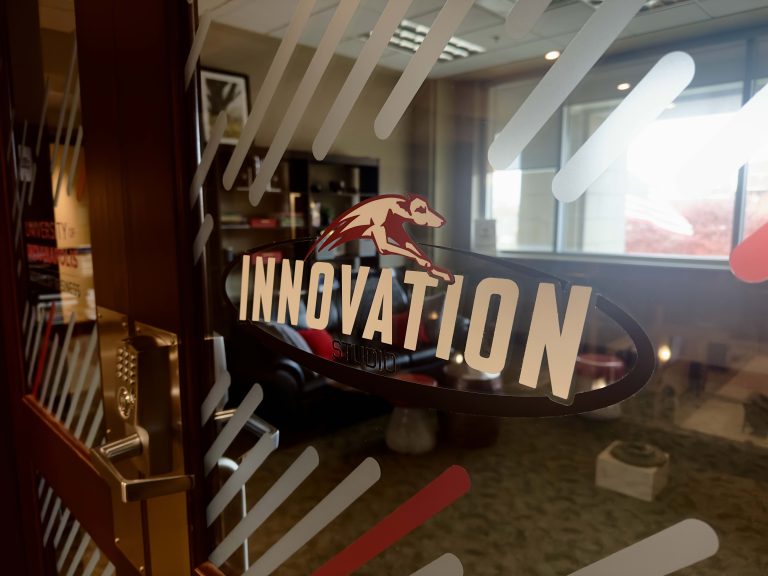Technology Support Specialist Josh Banks makes sure that the University of Indianapolis gets every possible spark of life out of its computers.
“Every computer we buy, we try to maximize the life out of it,” Banks said. “And sometimes, that’s taking two computers—one computer may have a bad motherboard, one computer may have a bad screen—and I’ll physically disassemble the computers to make one good computer.”
For budgetary and warranty reasons, though, UIndy replaces every lab computer on a three-year cycle and puts the old computers, PCs and Macs alike, into a hand-me-down pool.
“On average, a brand new desktop on this campus lasts seven years—three years on its regular cycle in a lab, and then four years in place as a hand-me-down,” Banks said.
According to Banks, the hand-me-down computers are used as print release stations, machines for student workers in various departments, front desks in residence halls or wherever there is a need. He added that the university tries not to reuse any computers that are broken or unreliable.
When the computers are at the end of the road, whether cycled through the hand-me-down pool or irreparable, they get picked up by employees of Green Wave Computer Recycling.
“What we do is we dismantle all equipment down to the different components,” said Mike Hiday, co-owner of GWCR.
According to Hiday, computers can be broken down into steel, plastic, circuit boards and—if they are older—precious metals. He said that the different materials are then shipped off to vendors who either melt down the steel frames, grind up the plastic casings or extract the gold, silver or copper from the circuit boards.
Hiday said that it is illegal to throw away anything with a circuit board. He added that it is also irresponsible, because computers can have harmful materials, such as lead, mercury and leaded glass from old cathode ray tube monitors.

Although GWCR has contracts with many companies, Hiday said that they also have public drop-off days, because anyone can be their customer.
“Whether it’s a university, a school, a small business, a large corporation, just a residential customer at home, everyone has electronics,” he said.
And anything in large quantities, whether PCs, paper or pallets, has value, according to Hiday.
UIndy does not see much of the money, though, according to Associate Vice President of Information Systems Steve Herriford. But he said that UIndy does benefit, because when the university hands over old computers, it hands over the responsibility of properly disposing of them.
“They [GWCR] basically get paid back by selling the recycled material,” Herriford said. “Sometimes there’s a little bit of fluctuation in that, but it’s generally pretty close to a wash. There might be a few dollars, depending on the size of our load that they’re taking. But we’re not making a bunch of money, and we’re not paying any money.”
Other universities have different protocols, though. At Butler University, staff remove the hard drives from every PC and wipe everything, even the operating system, off Macs, according to Butler Help Desk Specialist Roy Weese.
Weese said that the computers, which are either broken or more than four years old, are then sent to the Christy’s of Indiana auction house.
At UIndy, about three full-time employees and a half dozen students who work for the Help Desk have a week to get the labs ready after the second summer semester before classes resume. They will take apart the scheduled computer labs and set up the new machines. However, Banks said that the team also re-images every single lab computer, so the machines start the semester with a clean slate.
“When the machines are replaced, we still touch every computer that week,” Banks said. “Even if they [the labs] are not getting new computers, new physical hardware, they’re getting re-imaged. They’re getting new software installed.”
Herriford said that the computers are then moved to secure storage. The computers may get reused. They might sit for three years. Either way, once they are around six or seven-years-old, GWCR picks up the whole bunch.
“They don’t want to waste their time to come in and pick up two PCs, so we wait until we gather up pallets and pallets worth of stuff,” Herriford said. “Then they come in here, and we get it all out of here, clean up the storage area. Then we start filling it up again.”






